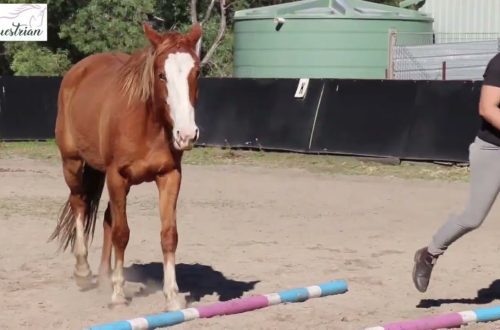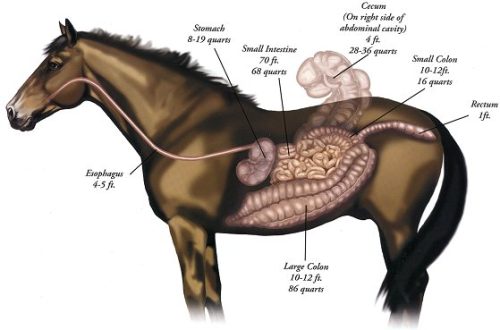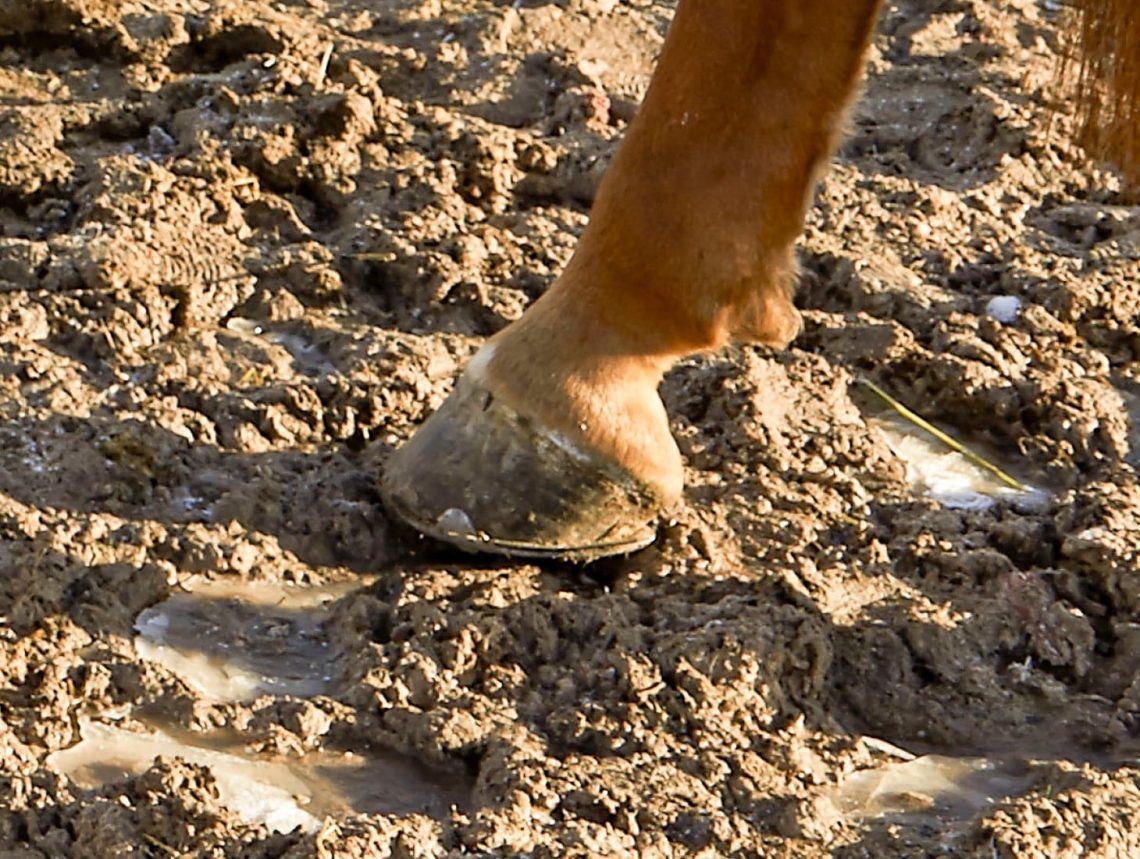
We arrange the soil in the paddock
We arrange the soil in the paddock
I don’t know about you, but I dreamed that one day I would live in my house with a stable and, going out on the terrace with a cup of coffee on a summer morning, I would enjoy a peaceful picture – my horses chew hay or just spend time in the paddock.
My dream came true and now, a few years later, I understand why this picture still continues to please me – the paddock is clean and beautiful at any time of the year!
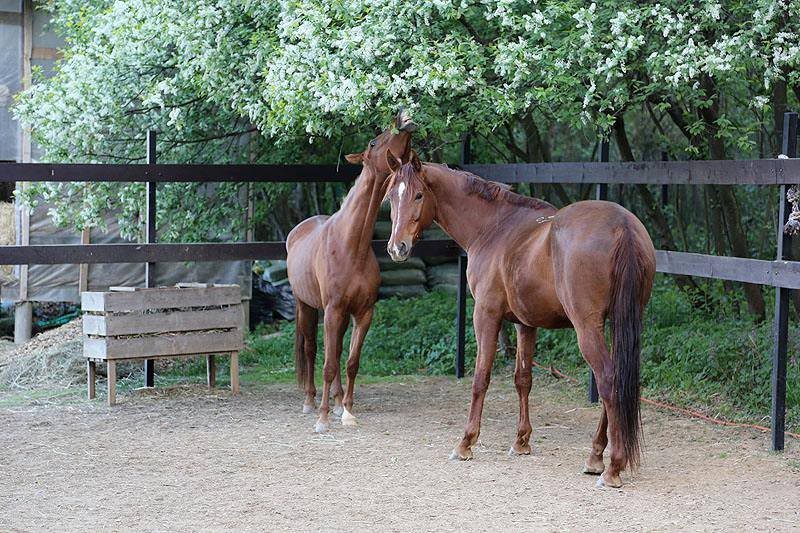
Agree, any dream that has come true can fade when faced with dull everyday problems.
To get around at least one of them, you should think about how to arrange the ideal ground in the paddock. I want to share with you our experience with my husband, which turned out to be successful, although it was the “first pancake”.
Each of you can imagine what, in the conditions of our climate, ordinary earth and even sand turns under the hooves of our beloved pets, especially in a limited space. Puddles that do not disappear for weeks after one decent summer rain; potholes in winter; dirty feet and biting midges on horses …
What requirements, in my opinion, should meet the ideal ground in the paddock?
1. It must be safe for the health of horses
2. It shouldn’t hold water
3. It should be level and moderately hard to help with natural hoof wear.
4. It should be easy to repair and, preferably, this repair is not required too often.
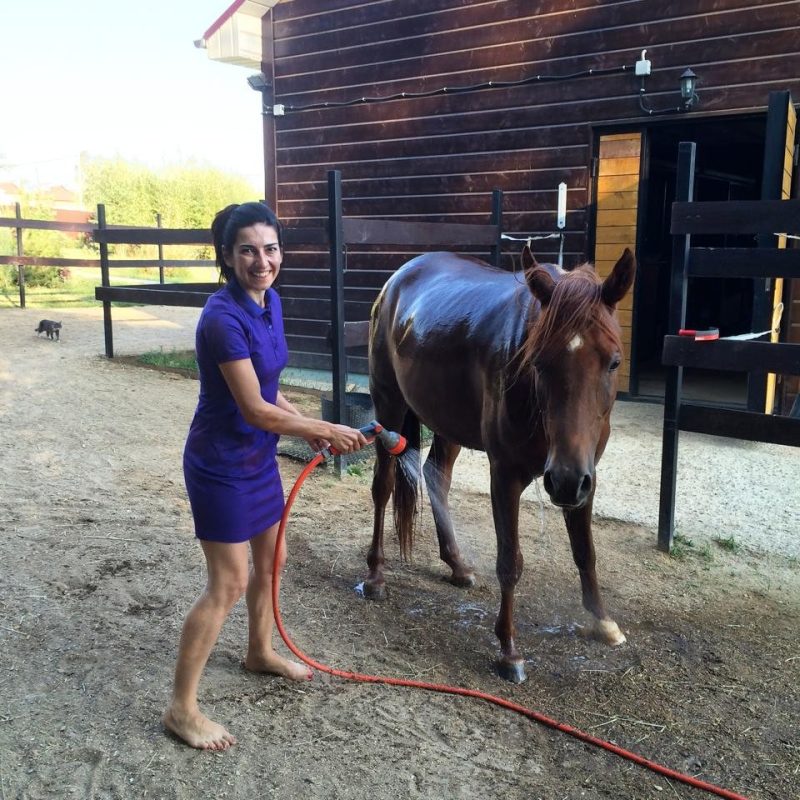
It is convenient to wash the horse with a hose and do not worry about water drainage
To achieve compliance with the first principle, it was decided to abandon the sand. Whatever feeders you place hay in, some of it will inevitably fall on the floor. Ever heard of sand colic? Although they say that they rarely happen to horses, we decided to play it safe. If not sand, then what? We interviewed more experienced “home” horse owners, the options were different – from simple earth with grass to crushed stone of various sizes.
In the end, we opted for dropout. Sifting is also crushed stone, but consisting of very small fractions (from 1 to 10 mm in size), which are formed by screening the remains of crushed rocks on special sieves. Screening should not be confused with granite chips, since the latter is much more expensive. The screenings compact well and create a slightly abrasive surface, which helps to wear out the hoof. At the same time, the surface remains flat and comfortable for horses, which allows you to work with them on the go.
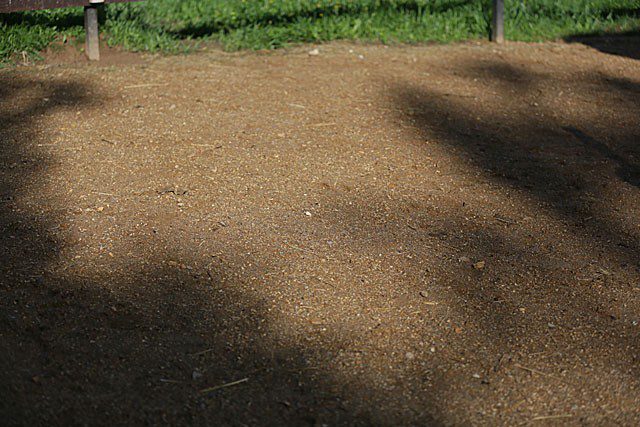
Screening out
However, screening, with its undoubted advantages, does not remove water well. It becomes viscous, heavy and spreads underfoot. A geogrid, a slight slope device and drainage pipes or ditches will help solve this problem.
The geogrid is a cellular fabric assembled from synthetic moderately flexible tapes (the size of the fabric in our case was 5,25 by 2,45 m). Such a geogrid is sold in the construction markets and is used, as a rule, to strengthen the soil on slopes (for example, along roads).
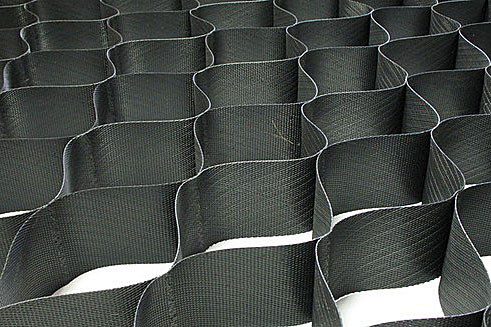
Geogrid
We used a grid with a cell of 150 by 150 mm and a height of 100 mm. If screenings are tightly driven into such a mesh, it perfectly keeps it from spreading and provides a better and directed water flow.
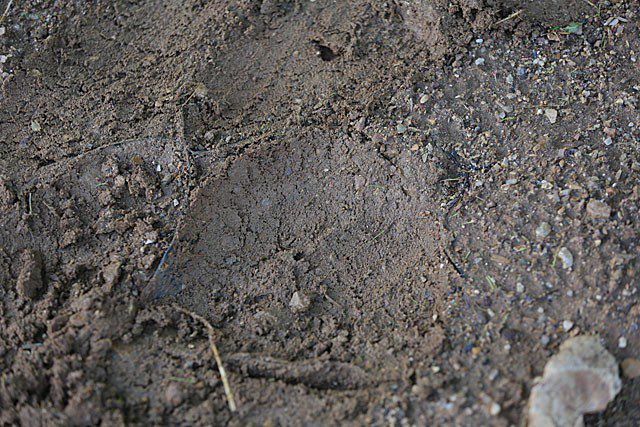
This is how a geogrid filled with dropouts looks like (part of the dropout is specially removed to show the boundaries of the cell)
It is very good if the place chosen for the paddock has a slight slope (1-2 cm per meter). Therefore, if there is no natural slope, I recommend arranging it – you still have to remove the top layer of soil, just remove it more from one or two sides. If there is a slope, you can limit yourself to making a drainage ditch or dig a drainage pipe along the lower perimeter of the paddock, connecting it to a drainage well, rather than laying a drainage under the paddock.
In our case, there is a fairly decent natural slope on the site (about 4 cm per 1 meter with a paddock width of 6 meters), so we limited ourselves to laying a drainage pipe (diameter 60 mm) along the lower border of the paddock, in order, among other things, to divert water from stable blinds.
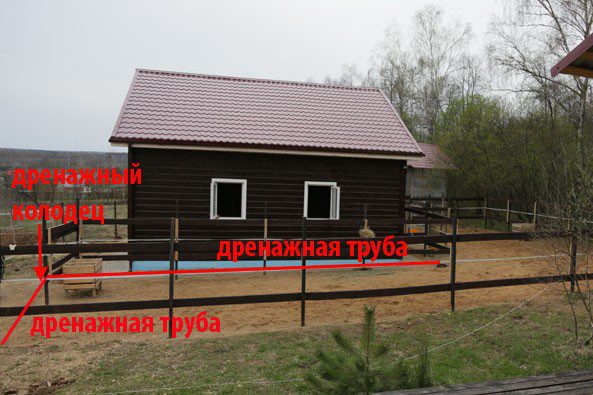
Location of drainage pipes in our paddock
So, how we arranged the ground in the paddock step by step.
1. First of all, we found a suitable place for the paddock. Our stable is semi-open – only closed at night – horses can freely leave it during the day directly to the paddock. This is very convenient, especially if your horses are friends and walk together.
2. Next, the excavation was carried out – the fertile layer was removed to a depth of 15 cm.
3. A geotextile with a density of 100 g/m2 was laid at the bottom of the formed “trough”. It is necessary so that the vegetation does not germinate and the paddock soil does not mix with the underlying layer (in our case, with clay).
4. A geogrid was laid on top (150x150x100). The mesh was stretched as much as possible, temporarily fixed along the edges with wooden pegs (you can use fittings, studs for attaching false ceilings and any other materials that you can easily remove after backfilling screenings). Between each other, the mesh cloths were tied with a hay rope (there are convenient holes).
5. Next, screenings were covered. Having filled all the cells and poured about 5 cm more on top, they rammed the screenings with the help of a vibrating plate (it can be rented at any major construction market for 1500-2000 rubles per day). Screenings should be added and driven in until a dense layer of 5-7 cm is formed above the geogrid. Practically, all you have to correct in the future is to add some new screenings.
6. We then dug a ditch along the bottom of the paddock and laid a drainage pipe with a diameter of 60 mm. The end of the pipe was led into a drainage well. We have a slope of 4 cm per meter, but you can limit yourself to a smaller slope of 1-2 cm per meter. If you have a large paddock, it may be necessary to lay drainage pipes under it.
Actually, this is where the work ended. This is not to say that this is a budget option for arranging the soil. But I am convinced that this is where your spending will end. For several years of operation in the Moscow region, our soil proved to be the best. Even after three hours of downpours, the formed puddles disappeared before our eyes, weeks of periodic rain did not lead to stagnant water; in winter, the soil, thanks to a flat surface, freezes more or less evenly, without potholes, and quickly thaws in spring. We have never topped it up and never fixed it at all, only removed manure and half-eaten hay.
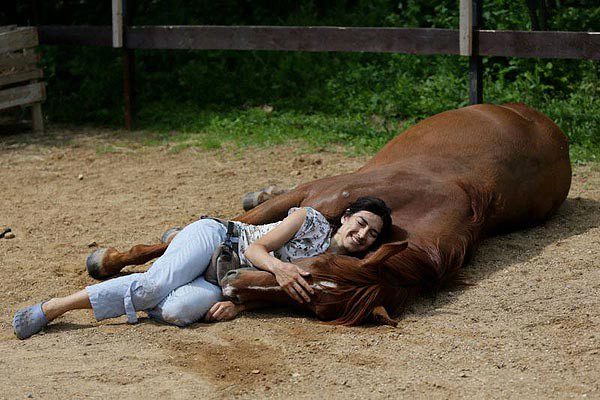
I wish you success in creating the perfect paddock for your favorite horses!
Marina Krasilshchikova, veterinary biochemist, candidate of biological sciences, private horse owner, horse and human trainer (www.artofhorsemanship.ru)
Author’s pages in social networks: VKontakte; Facebook.
- Finakt 21 2017 of August
Good day! Do horses ride in the paddock? I want to replace the soil in the levada with screenings, the levada is about 500m2 and the horse loves to scratch the skin there 🙂 Answer
 Maria 22 2017 of August
Maria 22 2017 of AugustYou can ask this question to the author of the article. Her social media pages are listed at the end of the article. Answer




